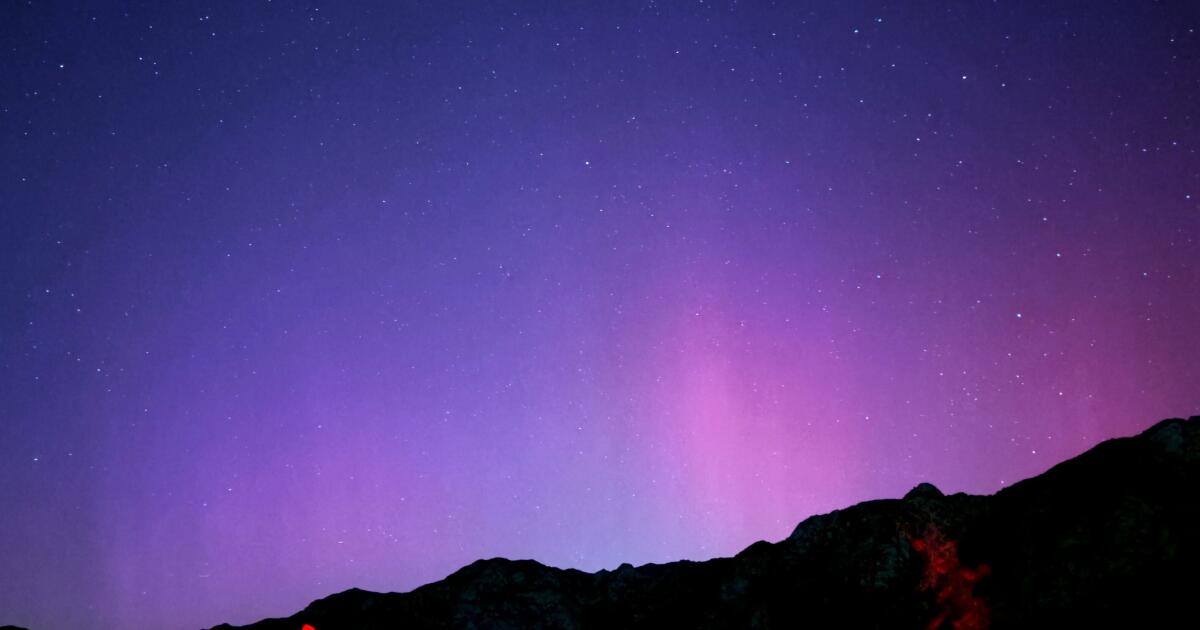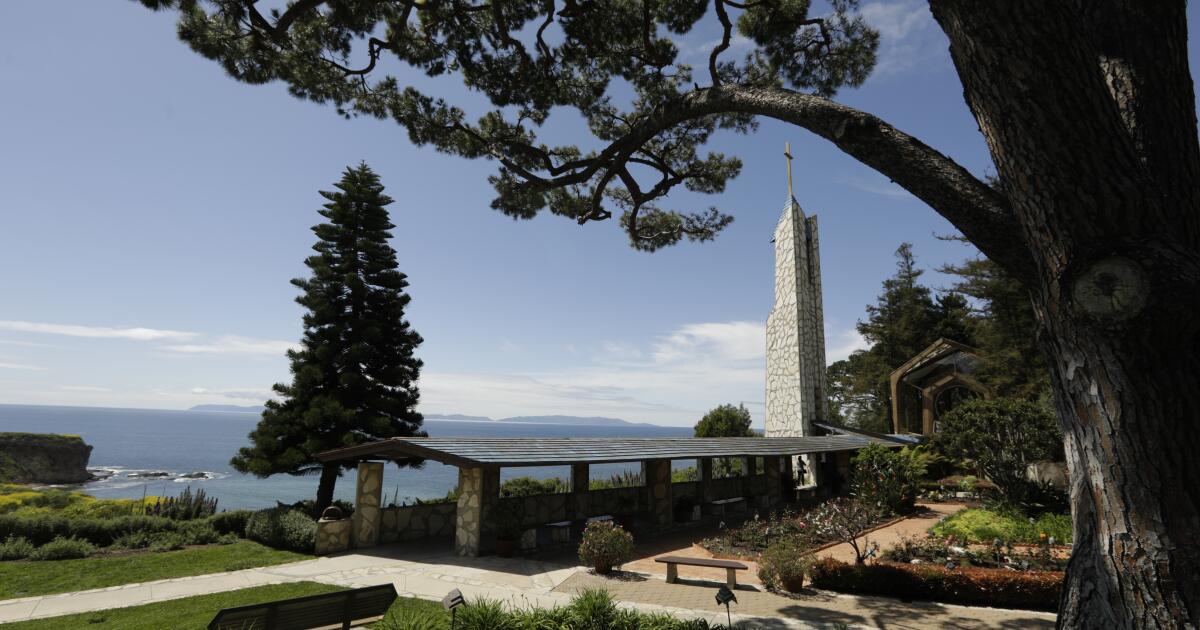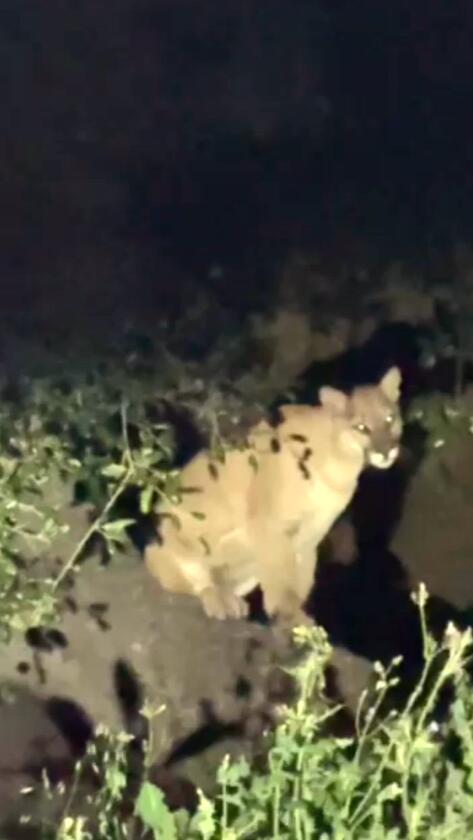World News
NASA asks for ‘quicker and cheaper’ help with Mars Sample Return


After months of turmoil over the future of a vaunted mission to bring samples of the Red Planet back to Earth, NASA has its verdict on Mars Sample Return.
The space agency is “committed” to bringing those rocks back from Mars, Administrator Bill Nelson said Monday, but will have to do it with way less money and in far less time than currently designed.
And how exactly is NASA going to pull that off? Right now it has no idea — and it’s looking for someone who does.
“I have asked our folks to reach out with a request for information to industry, to [the Jet Propulsion Laboratory] and to all NASA centers, and to report back this fall an alternate plan that will get [the samples] back quicker and cheaper,” Nelson said in a press conference at NASA headquarters.
His comments came in response to an independent review commissioned by NASA last year that declared there was “near zero probability” of Mars Sample Return making its proposed 2028 launch date, and “no credible” way to fulfill the mission within its current budget.
Pulling off the mission as designed would likely cost up to $11 billion, the review board found, with the samples not reaching Earth until at least 2040.
“The bottom line is that $11 billion is too expensive, and not returning samples until 2040 is unacceptably too long,” Nelson said. “It’s the decade of the 2040s that we’re going to be landing astronauts on Mars.”
The announcement comes as something of a blow to JPL, the La Cañada Flintridge institution tasked with managing the mission. JPL has already laid off more than 600 employees and 40 contractors this year after NASA ordered it to reduce spending in anticipation of budget cuts spurred by the challenges of Mars Sample Return.
Proposals go out soon to all NASA centers and the private aerospace sector for “a revised plan that utilizes innovation and proven technology to lower risks, to lower costs and to lower mission complexity so we can return these really precious samples to Earth in the 2030s,” said Nicky Fox, associate administrator, Science Mission Directorate. The due date for proposals is next month, and those selected for further study will get NASA grants this summer.
This essentially puts JPL in a position of having to compete for its own project.
“Right now if JPL were to come up with the answer, then I’d say JPL is gonna be sitting pretty good,” Nelson said during Monday’s news conference. “But we’re opening this up to everyone because we want to get every new and fresh idea that we can.”
NASA’s decision to outsource a solution to the Mars Sample Return problem frustrated some Mars scientists.
“What I expected is for NASA to step up and say, ‘These things are hard and we choose to do them,’ ” said Bethany L. Ehlmann, a planetary scientist at Caltech. “That is the leadership required to be the nation leading the world in space exploration.”
A joint project with the European Space Agency, Mars Sample Return would deliver rocks, rubble and dust that have already been gathered and sealed into tubes by the Perseverance rover.
The current design relies on a lander that would retrieve those tubes from the Red Planet’s Jezero Crater and use a small rocket to ferry them into Martian orbit, where they would rendezvous with a spacecraft that would make the journey back to Earth. The rocket would touch down on Earth roughly five years after the orbiter’s launch.
The ultimate goal is to comb the samples for evidence that life has ever existed on Mars, and to help NASA plan for future staffed missions, Nelson said.
In the most recent planetary science decadal survey, a report prepared for NASA every 10 years by the National Academy of Sciences, Engineering, and Medicine, planetary scientists named the Mars Sample Return mission as the “highest scientific priority of NASA’s robotic exploration efforts this decade” and argued that the program should be completed “as soon as is practicably possible with no increase or decrease in its current scope.”
But the authors cautioned that the ambitious mission shouldn’t come at the cost of other planetary science, suggesting a roughly $5-billion to $7-billion cap.
“Mars Sample Return is of fundamental strategic importance to NASA, U.S. leadership in planetary science, and international cooperation and should be completed as rapidly as possible,” the report stated. “However, its cost should not be allowed to undermine the long-term programmatic balance of the planetary portfolio.”
The agency is committing to keeping the mission within that recommended budget, Nelson said. Allowing Mars Sample Return’s costs to reach the $8 billion to $11 billion the review board estimated would require NASA “to cannibalize other programs, other science programs, and there are so many that are absolutely important,” Nelson said.
World News
Should London become a 'sponge city'?

Surface flooding is one of London’s biggest threats – so what can be done to combat it?
Source link
World News
Unconfirmed sighting of mountain lion in Griffith Park recalls L.A.’s favorite big cat, P-22

The mountain lion was caught in the Tesla’s headlights. Vladimir Polumiskov moved both quickly and slowly, not wanting to draw unwanted attention.
He put his 2-year-old son back in the car seat and got behind the wheel and quietly closed the door. His wife, Anastasiia Prokopenko, was in the passenger seat; she couldn’t believe what they were seeing.
“No way. No way,” she said. “Get in the car. Get in the car.”
The family, just back from a sushi dinner on Tuesday night, had pulled into a parking space at their apartment complex off Barham Boulevard in the Hollywood Hills. Living on the western edge of Griffith Park, they were accustomed to seeing wildlife — coyotes, bobcats, deer, foxes — wandering into their backyard. But a mountain lion was extreme.
“We’re not getting out,” Prokopenko said.
Less than 13 feet away, the cat was sitting on the low-angled trunk of an oak tree, partly hidden by weeds, his blond coat set off by the bright lights. Polumiskov, 30, reached for his phone and started shooting video.
“This guy was huge,” he said.
Though the sighting has not been confirmed by the National Park Service, which oversees the Santa Monica Mountains National Recreation Area and has also studied wildlife in the 4,000 acres of Griffith Park, the possibility of a mountain lion making its home in this island wilderness may give many Angelenos a sense of déjà vu all over again.
The mountain-lion king of Griffith Park — a cat known as P-22 — roamed these hills for 10 years. Captured in December 2022, he was euthanized after a team of doctors determined that because of internal injuries and infection, he was too sick to return to the wild.
A few months before, Polumiskov said he had seen P-22 skulking through the same parking lot before running off. “I had the same reaction then,” he said. “That doesn’t change. It was shocking.”
“Los Angeles misses P-22,” said Beth Pratt of the National Wildlife Federation, perhaps his most ardent champion.
In February 2023, Pratt helped organize at the Greek Theatre a sold-out celebration of his improbable life in Griffith Park, drawing more than 6,000 people wanting to pay their respects to the charismatic cat who, surrounded by development, freeways and cemeteries, lived peaceably in the center of Los Angeles.
Seven months later, the eighth annual official P-22 Day festival drew 15,000 attendees.
When Pratt first heard of this new sighting, she felt slightly overcome.
“It does my heart good,” she said . “It felt like P-22 had sent someone back to us — just to keep the hope alive that we hadn’t entirely banished the wildness in our lives.”
The National Park Service, which has reviewed Polumiskov’s video, is taking the claim seriously, according to spokesperson Ana Beatriz Cholo.
The park service has been studying the mountain lion population in the Santa Monica Mountains since 2002, when it collared its first cougar, which was given the name P-1 (P is for puma). Since then, it has tracked and collared 121 of the animals throughout the park.
If collared, the big cat in last week’s video would be P-122.
Video of a mountain lion spotted on Tuesday near Barnham Boulevard in Toluca Hills, new Hollywood. (Vladmir Polumisko)
“I’m a scientist at heart, but there is something almost mystical about this,” said Pratt, referring to the coincidental possibility that the two cats in Griffith Park would share so similar a number.
Park Service researchers are conducting interviews and combing through footage from wildlife cameras positioned throughout Griffith Park.
“We obviously want to make sure we confirm this is the real thing,” Cholo said. “Hopefully we’ll get that in the near future.”
But hope aside, she added, there is no guarantee that the mountain lion will stick around. Pumas need up to 200 square miles of habitat, and Griffith Park offers a little more than eight.
After shooting the video, Polumiskov put the Tesla in reverse and found another parking space far away from the mountain lion. Two hours later, he returned with a friend, and the cat was still there.
“He was still sitting in that tree, looking at us,” he said. “He is a beautiful, beautiful animal, young and healthy, perhaps the biggest mountain lion I’ve seen in my life.”
Four months earlier, Polumiskov had seen — while driving — what he believed was also a mountain lion. But without evidence, his family and friends doubted him. Now he had something more tangible.
The next day, he got a call from Jeff Sikich, a wildlife biologist and mountain lion specialist with the park service, who asked him a few simple questions — where and when — and reminded him to play it safe.
“He definitely educated me,” Polumiskov said.
“While it is exciting to see a wild animal,” said Cholo, “if you see a mountain lion, give it space. Don’t follow it. As tempting as it might be, this is a big cat and its behavior can be unpredictable.”
The total number of mountain lions in California is estimated to be between 3,200 and 4,500. About a dozen of the cats are said to live in the Santa Monica Mountains, and they are at risk for extinction because of low genetic diversity.
The current construction of a wildlife corridor over a 10-lane stretch of the 101 Freeway at Liberty Canyon in Agoura Hills promises to be a critical lifeline for the endangered species. When completed in 2026, it will be the largest — 200 feet long and 165 feet wide — and most expensive bridge of its kind in the world.
“The Wallis Annenberg Wildlife Crossing is critical” for the survival of the species, Pratt said . “But Griffith Park also needs safe routes for its wildlife trying to navigate the city.”
World News
Former CIA director reacts to Stefanik’s remarks about ‘wiping’ Hamas ‘off the face of the Earth’
House GOP Conference Chair Elise Stefanik delivered remarks at the Israeli Knesset Sunday, saying victory for Israel in the war against Hamas starts with “wiping” those responsible for the October 7 terrorist attacks “off the face of the Earth” and calling for a return to former President Donald Trump’s policies. Former CIA director Leon Panetta reacts.
-

 African History4 months ago
African History4 months agoBlack History Facts I had to Learn on My Own pt.6 📜
-

 African History4 years ago
African History4 years agoA Closer Look: Afro-Mexicans 🇲🇽
-

 African History1 year ago
African History1 year agoPROOF AFRICAN AMERICANS AIN'T FROM AFRICA DOCUMENTED EVIDENCE
-

 African History2 years ago
African History2 years agoHow Did Normal Medieval People Survive Winter? | Tudor Monastery Farm | Chronicle
-

 African History4 years ago
African History4 years agoA Closer Look: Afro-Mexicans 🇲🇽
-

 African History3 years ago
African History3 years agoWhat happened to the many African Kingdoms? History of Africa 1500-1800 Documentary 1/6
-

 African History3 years ago
African History3 years agoThe Entire History of Africa in Under 10 Minutes – Documentary
-

 African History2 years ago
African History2 years agoAFRO MEXICO: Black History In Mexico!






























